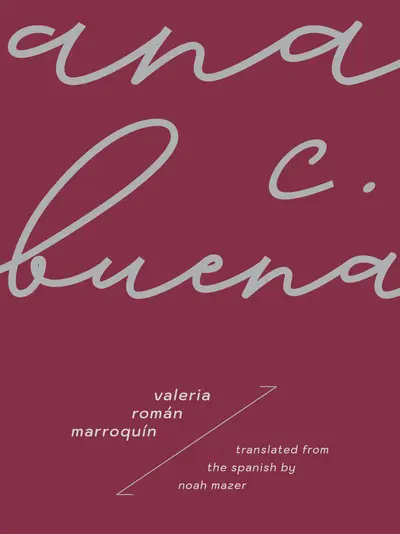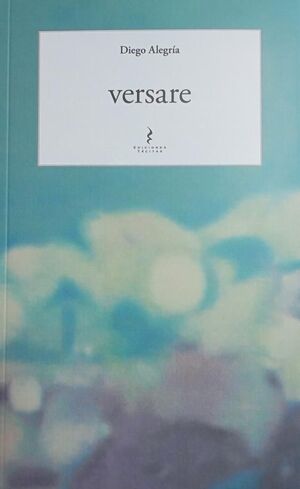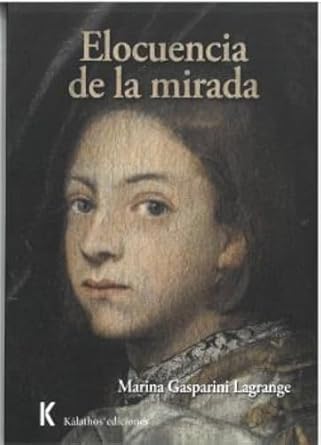Spain: Editorial Pre-Textos. 2023. 342 pages.
 Keila Vall de la Ville, a Venezuelan writer based in the United States, has published a variety of literary works that have been recognized for their value, making their presence felt through numerous worlds. To mention just two, her book of stories Ana no duerme (2007) was a finalist in the Monte Ávila Editores National Unpublished Authors Contest (Venezuela), and her novel Los días animales (2016) earned the International Latino Book Award for Best Novel in 2018 and was translated to English by Robin Myers as The Animal Days in 2021. Now, in Minerva (Pre-Textos, 2023), the symbology of empty spaces as dances prevents a single still footprint from being left behind. With twists and turns that go from memory to the body, the symptoms of foreignness in New York mingle with Venezuelan desperation at violence and kidnappings, making record of the wish not to forget and opening up the recollections of the valuable and mobile triangle of beginnings. Minerva—daughter of Lissa, Di, and Martín—dances and keeps still as the heir to an undefined, alternative, and polyamorous family.
Keila Vall de la Ville, a Venezuelan writer based in the United States, has published a variety of literary works that have been recognized for their value, making their presence felt through numerous worlds. To mention just two, her book of stories Ana no duerme (2007) was a finalist in the Monte Ávila Editores National Unpublished Authors Contest (Venezuela), and her novel Los días animales (2016) earned the International Latino Book Award for Best Novel in 2018 and was translated to English by Robin Myers as The Animal Days in 2021. Now, in Minerva (Pre-Textos, 2023), the symbology of empty spaces as dances prevents a single still footprint from being left behind. With twists and turns that go from memory to the body, the symptoms of foreignness in New York mingle with Venezuelan desperation at violence and kidnappings, making record of the wish not to forget and opening up the recollections of the valuable and mobile triangle of beginnings. Minerva—daughter of Lissa, Di, and Martín—dances and keeps still as the heir to an undefined, alternative, and polyamorous family.
Theirs is also a family that creates and lives in its own world, beyond time and geographical distances. In the novel, Di says, “this progressive, cumulative line we call time is pure fiction. All in your head. She says time is not a line. It’s circular. I—Minerva—say time is a piece of origami.” These words, progressively folded in on themselves, reflect on being, or the multiplicity of itself, and turn, moving down the path of the inner desires that also live in the reality of other bodies. In this work we witness an imprecise arithmetic of family figures, as Minerva the little girl grows up emotionally and physically, while politics make the world turn and her existence swing in pendular fashion between day-to-day life and memories, between two countries, two languages, two bodies. This movement is reflected in dance: “If I don’t dance I don’t think well. I am a ballerina in the strictest sense of the verb ‘to be.’”
Minerva wants to establish, like in ballet, certain currents that reinforce the golden rule of never looking at the floor while you dance. To overcome familial ambiguities, the rejection of those who want to maintain traditions, or the impossible longing to be conscious of the place where she is going to dance, she tries constantly to dominate her body, to overcome the harm done, to avoid injury. Nonetheless, in a diverse family environment, in her displaced life, she always returns to the starting point. Her body does this for itself—a body that, besides dancing, can also keep still for hours like an artist’s model. A ballerina’s face whose gaze drifts far away from fears, a dancing body that stays still for hours like a nude model, both necessary acts. In others of the book’s notes, the gaze turns. When she plucks down an envelope, for example, she brings her hands together to try to open it, or at least to put everything on pause: “Let its long time set the rhythm and the route. An envelope. Hold the envelope in my hands, explore it as if it were the first paper envelope ever seen. Look at it with mistrust and, at once, as an extension of myself. I am a baby who looks down at her own feet, not knowing they are hers.”
“FROM MUSIC IN ENGLISH AND SPANISH, FROM CHILDHOOD AND ADULTHOOD, MINERVA GRADUALLY REBUILDS HERSELF UNTIL REACHING THE LAST LINES OF THE SKETCH OF HER BODY IN THE NOVEL”
As Minerva points out, using the gaze is the art of holding oneself up, an art that must exist to highlight the trilogy of the family that raises children, although not all of them engender a little body. The trifold home teaches Minerva how to survive even while being “a feline with blistered feet.” The three figures who metaphorically procreate the little girl come together from their bodily values. In the closed spaces of the house, the little girl is always fascinated by the word busto, or bust, because it’s mysterious and almost no one uses it, and because its absence, beyond the natural, is a necessary symbol. This diminutive bodily organ is the erased bosom that starts to form the omitted and reconstructed gender that brings a family together. Thus, Minerva grows up supported by the symmetrical triangle of her upbringing, with a bound-chested mother and flat-chested fathers. Further along, other perimetric lines in the geometry of education end up valuing the vision of the little girl who later experiences likeness with other diverse faces, symmetry with the bodies of her lovers, and the capacity to feel pains and pleasures together. From Caracas, Minerva travels to New York City to use her body as an axis of cultural and social connection, crammed with multiple identities.
Like in ancient cities, this novel demands to be walked through, and so some chapters have only brief lines under numbers like those of streets: “I am / kinetic art in bloodline circulation” (chapter 108), “This is my subway station: 110 Street” (chapter 110), “To look is to let the light in / that’s why it burns” (chapter 117). Nonetheless, the novel is replete with flavors and recollections; Minerva is both one and many, from the front cover to the last page. “Minerva becomes more Minervas as she adapts and lets herself be molded.” They tell her, “You are not your body,” and she takes this to be true. Nonetheless, she adds, “You need your body in order to be. The body is both filter and reflection.” The body is everything, and existence is inserted within it. Memory. Doubt. Is forgetting freedom, and remembering a sentence? If you don’t reach either side, does everything stand still? “It looks like I’m moving but I’m standing still”: these words summarize what she believes she is and will continue to be.
Some of the simplest gestures, which also pass through the five senses, are survival strategies in the novel. In New York, words baptize the “enormous boulder marbles. With a peanut inside,” such that they might survive on peanuts, like the dense balls of chocolate called Torontos in Venezuela. This is the flavor of an incomplete memory. “You Google ‘comfort food’ and you see: Term referring to foods with sentimental or nostalgic value that can be characterized by their high caloric content, elevated level of carbohydrates, or simple preparation. The nostalgic experience refers to the individual history of a person or to cultural patterns.” In the circularity of coming back, of the return that is necessary for a new beginning, this novel’s contents never stand still. From the palindrome of gender in the family to geographic spaces, from the body and memory, from public and private places, from metaphors of food and drink, from music in English and Spanish, from childhood and adulthood, Minerva gradually rebuilds herself until reaching the last lines of the sketch of her body in the novel.





